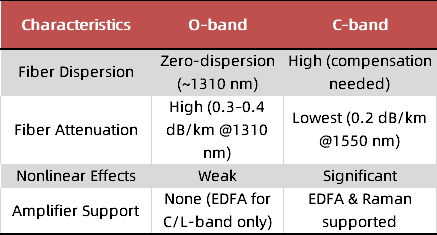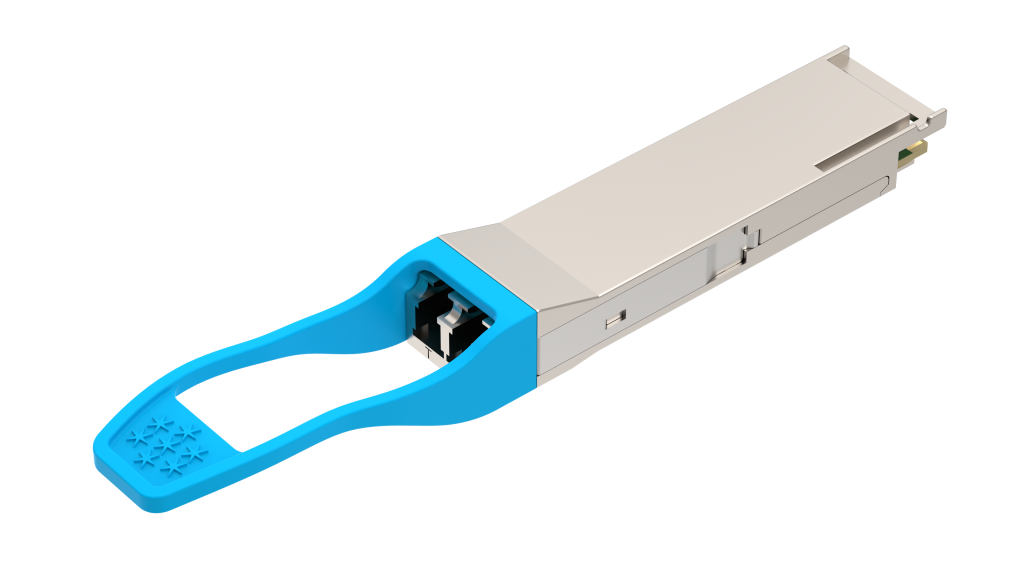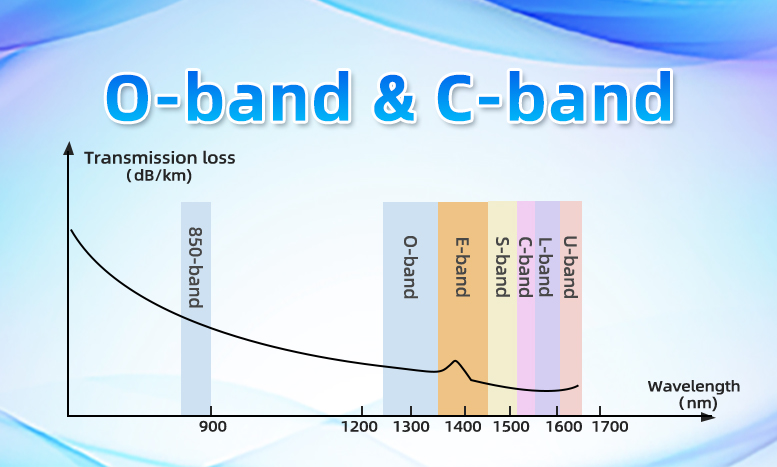O/C-band DWDM Modules: COLOR Series Drives Efficient Transmission
High-speed and stable data transmission capabilities are pivotal for the development of various industries. From data center interconnections to metropolitan area network infrastructure, optical communication technologies face increasingly stringent requirements. DWDM technology, with its high bandwidth and long-distance transmission capabilities, has become a cornerstone of communication networks. Among these, the O-band and C-band each offer unique advantages. GIGALIGHT has introduced three COLOR series 100G DWDM optical transceivers for these two bands, providing users with optimal solutions.
O-band and C-band: Distinctive Tools for Transmission
In DWDM (Dense Wavelength Division Multiplexing) systems, C-band and O-band are two commonly used optical wavelength bands, differing in wavelength range, transmission characteristics, and application scenarios.


O-band: The earliest band used in fiber-optic communications (e.g., early 1310nm systems).
C-band: The core band for modern DWDM, covering 1530–1565nm (expandable to C+L-band, 1565–1625nm).
The zero-dispersion characteristic of O-band is suitable for direct detection (non-coherent), but its high attenuation limits transmission distance.
C-band’s low attenuation and amplifier support make it ideal for long-haul DWDM.

How to Choose Between O-band and C-band?
C-BAND
Requirements: High speed (≥100G), long-distance, high channel density (e.g., operator backbone networks).
Limitations: Requires dispersion compensation and complex DSP (coherent optics).
Long-haul DWDM systems:
Backbone networks, submarine cables (e.g., C-band 96 channels, 100G/400G per channel).
Coherent optical communications (C-band + EDFA for thousands of kilometers of transmission).
Expanded applications:
Combined use of C+L-band (doubling channel capacity, e.g., 192 channels).
O-BAND
Requirements: Low cost, short-range (<40 km), plug-and-play (e.g., intra-data center rack interconnections).
Limitations: No amplifier support, typically ≤100G speed.
Low dispersion: O-band’s low fiber dispersion is suitable for long-distance transmission, reducing signal distortion.
High bandwidth: Through DWDM technology, O-band optical transceivers can transmit multiple wavelengths over a single fiber, significantly increasing transmission bandwidth.
Compatibility: O-band DWDM optical transceivers are generally compatible with existing fiber infrastructure, facilitating upgrades and expansions.
The characteristics of O-band DWDM optical transceivers make them suitable for applications in metropolitan networks and data center interconnections.
GIGALIGHT COLOR Series: Exceptional Choices for O-band and C-band
COLOR X 100G QSFP28 DWDM1 O-BAND

Product speed: 100Gbps, PAM4 modulation mode, 30km transmission distance (with SOA).
Full series of 16 wavelengths, covering O-Band DWDM 1295.56nm~1312.58nm with a 200GHz wavelength interval.
Key Applications:
5G front-haul
Data center interconnection (DCI)
COLOR ZR+ 100G QSFP28 PSM DWDM4

O-band
Product speed: 100Gbps, NRZ modulation mode, 40km transmission distance (with SOA).
Full series of 16 wavelengths, covering ITU-T 694.1 O-Band DWDM 233.6~231.2THz with a 150GHz wavelength interval.
Key Applications:
Point-to-point access networks
C-band
Product speed: 100Gbps, NRZ modulation mode, 120km transmission distance (with EDFA & DCM).
Full series of 48 wavelengths, with 4 channels per device, covering C-Band DWDM 191.3THz to 196.0THz with a 100GHz wavelength interval.
Key Applications:
100G Ethernet metropolitan access via DWDM
Point-to-point access networks
GIGALIGHT’s COLOR series (COLOR X/ZR+) 100G QSFP28 DWDM optical transceivers offer innovative products for both O-band and C-band, providing users with diverse choices. O-band products, with their low loss and no need for dispersion compensation, have broad application prospects in metropolitan access scenarios. C-band products, known for their maturity, stability, and long-distance transmission capabilities, are the preferred choice for data center interconnections and cross-metropolitan optical cable transmissions.
As communication technologies continue to evolve and market demands change, GIGALIGHT will continue to develop more cost-effective, non-coherent DWDM transmission solutions in 200G, 400G, and 800G transmission networks using silicon photonics and traditional technologies. We believe that GIGALIGHT’s optical transceiver products will play an even more critical role in future communication networks, providing users with more efficient, reliable, and cost-effective data transmission services, and jointly driving innovation and progress in communication technologies. Choosing GIGALIGHT means choosing endless possibilities for future communications!

